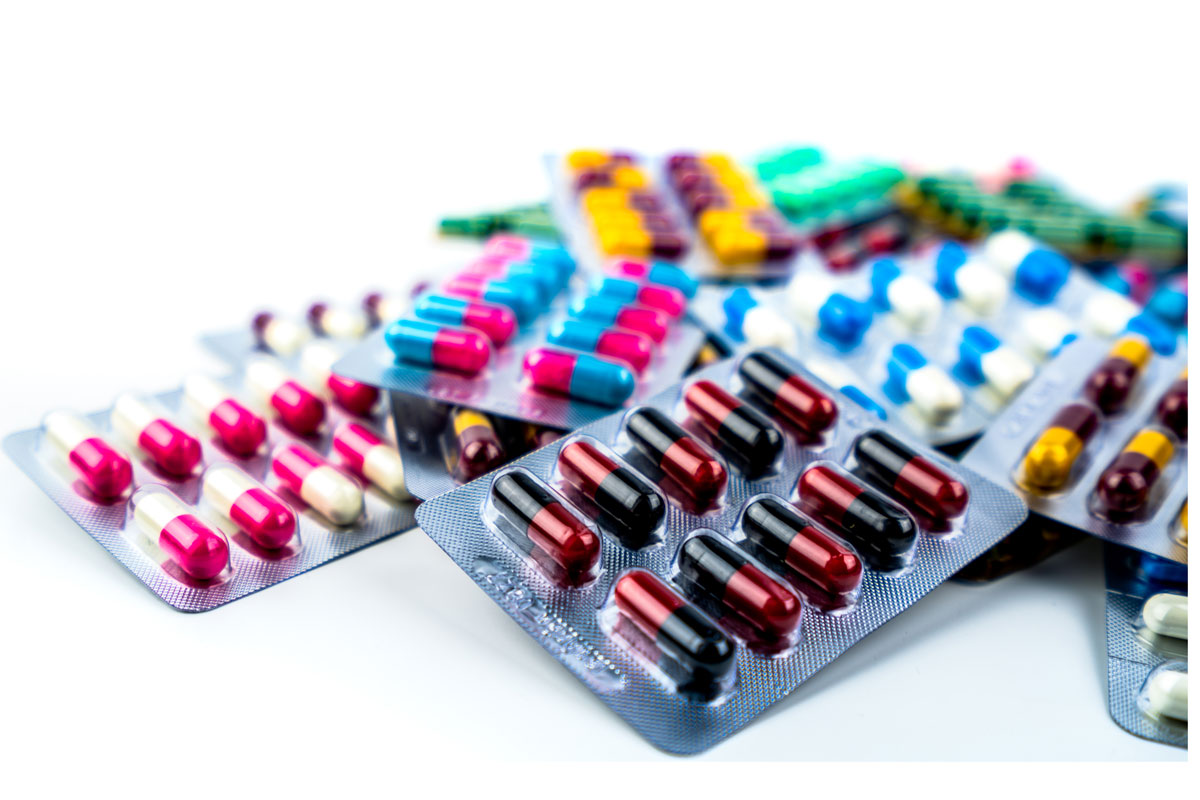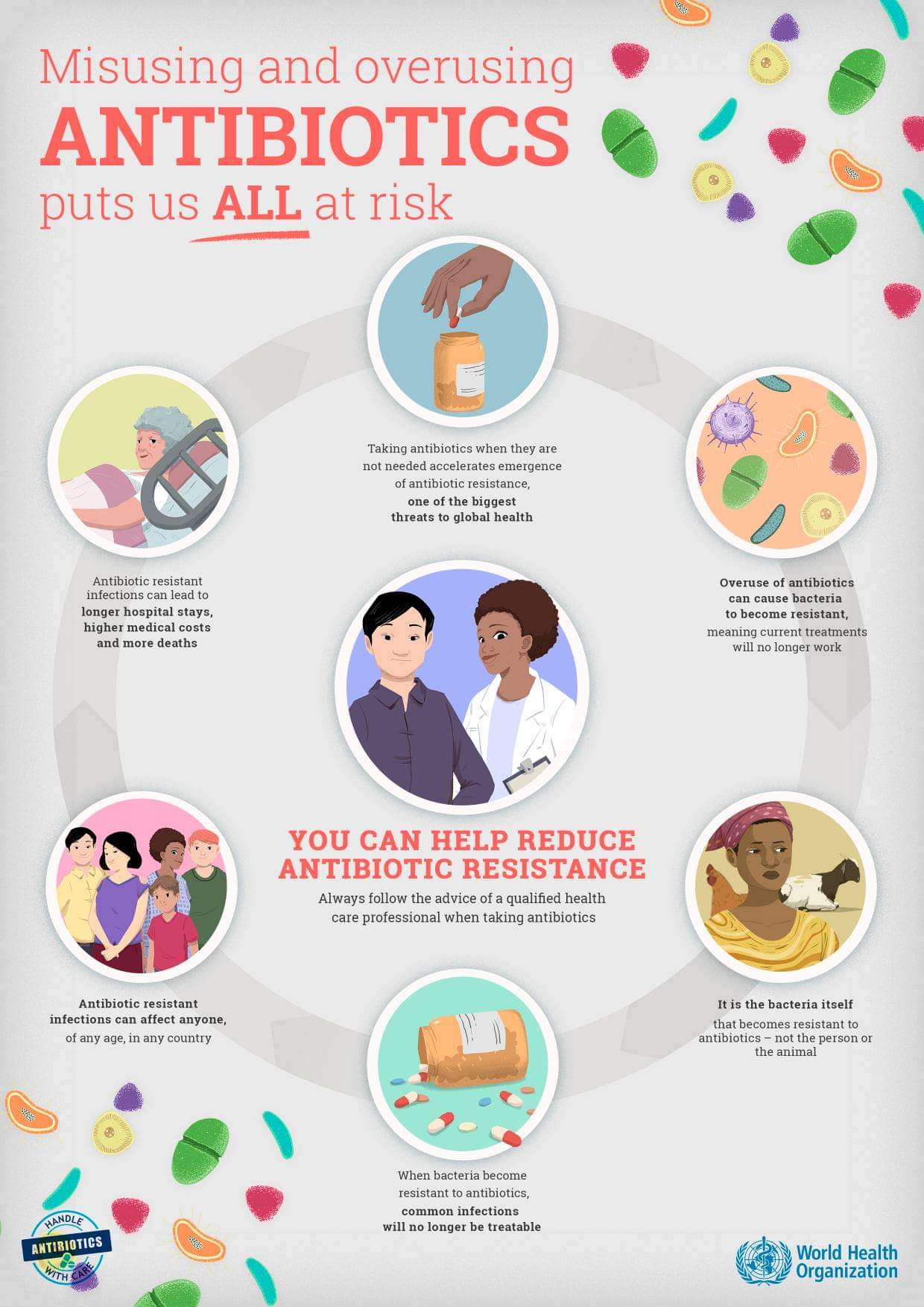What are antibiotics?
Antibiotics are a common medication that doctors prescribe to fight bacteria. Antibiotics are powerful medicines that fight certain infections and can save lives when used properly. They either stop bacteria from reproducing or destroy them.
Before bacteria can multiply and cause symptoms, the immune system can typically kill them. White blood cells (WBCs) attack harmful bacteria and, even if symptoms do occur, the immune system can usually cope and fight off the infection.
Sometimes, however, the number of harmful bacteria is excessive, and the immune system cannot fight them all. Antibiotics are useful in this scenario. Several types of modern antibiotics are available, and they are usually only available with a prescription in most countries. Topical antibiotics are available in over-the-counter (OTC) creams and ointments.
Each antibiotic is effective only against certain types of bacteria. In selecting an antibiotic to treat a person with an infection, doctors evaluate which bacteria are likely to be the cause. For example, some infections are caused only by certain types of bacteria. Sometimes one antibiotic is predictably effective against all of the bacteria that are most likely to be causing an infection and so further testing may not be needed.
If infections may be caused by many different types of bacteria or by bacteria that are not predictably susceptible to antibiotics, a laboratory is asked to identify the infecting bacteria from samples of blood, urine, or tissue taken from the person. The infecting bacteria are then tested for susceptibility to a variety of antibiotics. Results of these tests usually take a day or two and thus cannot guide the initial choice of antibiotic if the infection needs to be treated immediately. In such cases, doctors typically start treatment with an antibiotic that is effective against the bacteria most likely to be causing the infection. When test results are back, doctors change the antibiotic if needed.
Antibiotics that are effective in the laboratory do not necessarily work in an infected person. The effectiveness of the treatment depends on
- How well the drug is absorbed into the bloodstream (for drugs taken by mouth)
- How much of the drug reaches the sites of infection in the body (see Drug Distribution)
- How quickly the body eliminates the drug (see Drug Elimination)
These factors may vary from person to person, depending on other drugs being taken, other disorders present, and the person’s age.
How antibiotics work?
Antibiotics work in two ways. They either kill bacteria or stop the bacteria from growing and multiplying. They often do both. Antibiotics interfere with different processes in the cells of the bacteria that they target. This stops the bacteria from growing or functioning properly. Some antibiotics work better the larger a dose you have, others are more effective the longer you take them.
Different antibiotics target different types of bacteria. That’s why your doctor will usually try to find out the type of bacteria causing your infection before prescribing an antibiotic. This makes sure that you have the most effective antibiotic for your infection.
List of Antibiotics and What they Do?
| Antibiotics | ||
| drug class and generic name | common trade names | common uses |
| Aminoglycosides (inhibit protein synthesis) | ||
| gentamicin | Garamycin | infections of the respiratory and urinary tracts, blood, abdominal cavity; pelvic inflammatory disease |
| tobramycin | AKTob, Nebcin | infections of the respiratory and urinary tracts, blood, abdominal cavity; pelvic inflammatory disease |
| Cephalosporins (inhibit cell wall synthesis) | ||
| cefaclor | Ceclor | infections of the respiratory and urinary tracts and skin; otitis media |
| cefamandole | Mandol | infections of the respiratory and urinary tracts, skin, bone and joints, and blood; peritonitis |
| cefazolin | Ancef, Kefzol | infections of the respiratory and genitourinary tracts, skin, bone and joints, and blood; endocarditis |
| ceftriaxone | Rocephin | infections of the respiratory and urinary tracts, skin, blood, abdominal cavity, and bone and joints; pelvic inflammatory disease; gonorrhea; meningitis |
| cefuroxime | Ceftin, Kefurox | infections of the respiratory and urinary tracts, skin, bone and joints, and blood |
| cephalexin | Biocef, Keflex | infections of the respiratory and urinary tracts, skin, and bone; otitis media |
| Chloramphenicols (inhibit protein synthesis) | ||
| chloramphenicol | Chloromycetin | infections of the eyes, ears, and skin; cystic fibrosis; prevention of infection in minor wounds |
| Fluoroquinolones (interfere with DNA synthesis) | ||
| ciprofloxacin | Cipro | infections of the respiratory and urinary tracts, skin, eyes, abdominal cavity, and bone and joints; diarrhea; gonorrhea; sinusitis; pneumonia; prostatitis; anthrax |
| norfloxacin | Chibroxin, Noroxin | urinary tract infections, STDs caused by Neisseria gonorrhoeae, eye infections, prostatitis |
| Lincosamides (inhibit protein synthesis) | ||
| clindamycin | Cleocin | infections of the respiratory tract, skin, and abdominal cavity; acne; pelvic inflammatory disease |
| Macrolides (inhibit protein synthesis) | ||
| azithromycin | Zithromax | infections of the respiratory tract and skin; STDs; otitis media; chronic obstructive pulmonary disease; pneumonia |
| clarithromycin | Biaxin | infections of the respiratory tract and skin; otitis media |
| erythromycin | E.E.S., E-Mycin, Eryc | infections of the respiratory tract, skin, and eyes; STDs; pertussis; diphtheria; intestinal amebiasis; otitis media; acne; Legionnaire disease; prevention of infection in minor wounds |
| Nitrofurans (inactivate essential cell components) | ||
| nitrofurantoin | Furadantin, Macrobid | urinary tract infections |
| Penicillins (inhibit cell wall synthesis) | ||
| amoxicillin | Amoxil, Trimox | various streptococcal and staphylococcal infections |
| ampicillin | Marcillin, Omnipen | infections of the respiratory and urinary tract and blood; meningitis; gonococcal infections; endocarditis |
| penicillin G | Bicillin, Pen-G Pot, Wycillin | streptococcal and staphylococcal infections |
| piperacillin | Pipracil | infections of the respiratory and genitourinary tracts, skin, abdominal cavity, bone and joints, and blood |
| ticarcillin | Ticar | infections of the respiratory and gastrointestinal tracts; streptococcal and pseudomonas infections; gonorrhea; tonsillitis; Lyme disease; impetigo; otitis media; meningitis |
| Tetracyclines (inhibit protein synthesis) | ||
| tetracycline | Achromycin, Sumycin | rickettsia, pneumonia, chlamydia, intestinal amebiasis, acne, prevention of infection in minor wounds |
| Miscellaneous antibiotics | ||
| aztreonam | Azactam | infections of the respiratory and genitourinary tracts, skin, abdominal cavity, and blood |
| imipenem-cilastatin | Primaxin | infections of the respiratory and genitourinary tracts, skin, abdominal cavity, bone and joints, and blood; endocarditis |
| isoniazid | INH, Isoniazid, Nydrazid | tuberculosis |
| metronidazole | Flagyl, Protostat | infections of the vagina and gastrointestinal tract |
| rifampin | Rifadin, Rimactane | tuberculosis |
| trimethoprim-sulfamethoxazole | Bactrim, Cotrim, Septra | urinary tract infections, shigellosis, otitis media, bronchitis, traveler’s diarrhea |
| vancomycin | Lyphocin, Vancocin | infections resistant to penicillins and cephalosporins |
What is antibiotic resistance?
Antibiotic resistance occurs when bacteria change in response to the use of these medicines. Bacteria, not humans or animals, become antibiotic-resistant. These bacteria may infect humans and animals, and the infections they cause are harder to treat than those caused by non-resistant bacteria.
Antibiotic resistance leads to higher medical costs, prolonged hospital stays, and increased mortality.
The world urgently needs to change the way it prescribes and uses antibiotics. Even if new medicines are developed, without behavior change, antibiotic resistance will remain a major threat. Behaviour changes must also include actions to reduce the spread of infections through vaccination, hand washing, practicing safer sex, and good food hygiene.







